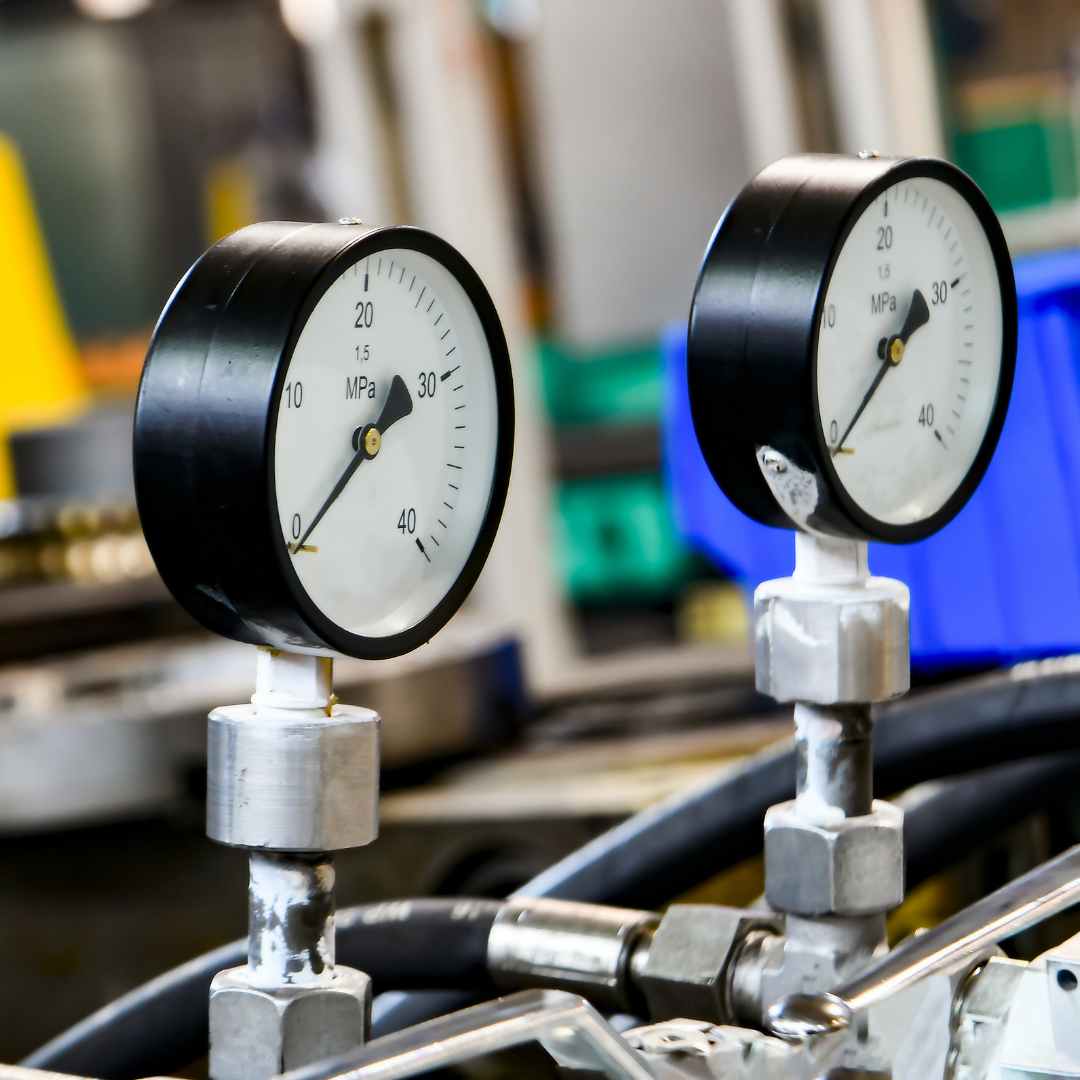Beating the Summer Heat: How High Ambient Temperatures Affect Compressor Performance and Efficiency
05/07/2025

As the calendar turns to June and summer temperatures begin to climb, engineers and facility managers face a predictable yet critical challenge. Beyond keeping the plant and its personnel cool, the rising heat poses a significant threat to the operational heart of many industrial facilities: the compressed air system. Heat is the number one enemy of air compressor efficiency and reliability. Ignoring its effects can lead to higher energy bills, unexpected production downtime, and accelerated equipment wear. At Blackhawk Equipment, we believe that proactive preparation is the best defense. This guide will explore the technical reasons why heat is so detrimental to your compressors and provide a practical, actionable plan to mitigate its impact, ensuring your system runs reliably all summer long.
The Physics of the Problem: Why Heat Hurts Compressor Performance
The negative impact of high ambient temperatures on a compressed air system isn't just a matter of general strain; it's rooted in fundamental physics. Understanding these principles helps clarify why summer readiness is so crucial.
-
Reduced Air Density:

- The first principle to understand is that hot air is less dense than cool air. A positive displacement air compressor (like a rotary screw type) takes in a fixed volume of air with each rotation (e.g., cubic feet per minute). However, industrial processes require a specific mass of air to perform work. When the intake air is hot and less dense, each cubic foot contains less air mass.
- Consequently, the compressor must run longer or, for VSD units, at a higher speed to compress enough air to meet the required mass flow and pressure demanded by your plant. This directly translates to increased run time and higher energy consumption per unit of compressed air delivered, driving up your operational costs.
-
Increased Moisture Load:
- A critical concept for engineers is the relationship between air temperature and its ability to hold water vapor. Warmer air can hold significantly more moisture than cooler air. For every 20°F (11°C) increase in temperature, the air’s capacity to hold water vapor roughly doubles.
- This means that on a hot, humid summer day, your compressor is ingesting a much higher concentration of water vapor. As this air is compressed and subsequently cooled, a massive volume of liquid water condenses out. This puts an enormous strain on your air dryers, filters, and condensate drains, dramatically increasing the risk of moisture carryover into your downstream piping, tools, and processes.
-
Strained Cooling Systems:
- Air compressors generate immense heat during the compression cycle. They rely on their own integrated cooling systems (whether air-cooled or water-cooled) to dissipate this heat and maintain a safe internal operating temperature. The effectiveness of any cooling system depends on the temperature difference (ΔT) between the hot medium (compressor oil, air) and the cooling medium (ambient air, cooling water).
- When the ambient temperature rises, this ΔT is reduced. Your compressor’s cooling system becomes less effective and has to work much harder to reject the same amount of heat. This leads directly to higher internal operating temperatures for the entire compressor package.
The Consequences of Overheating: From Inefficiency to Costly Shutdowns
When a compressor's cooling system can't keep up with the summer heat, the consequences range from subtle inefficiencies to critical failures.
- High-Temperature Shutdowns: Most modern compressors are equipped with safety sensors that will shut the unit down if the operating temperature exceeds a set limit (typically around 220-230°F or 105-110°C). While this protects the machine from catastrophic damage, each shutdown means an immediate halt to production, leading to costly downtime and logistical chaos.
- Accelerated Lubricant Degradation: High operating temperatures are the primary cause of premature lubricant breakdown. Heat accelerates the oxidation of compressor oil, reducing its ability to lubricate, seal, and cool effectively. This leads to the formation of varnish and sludge, which can clog coolers and separators, further compounding the overheating problem. You'll face more frequent and expensive oil changes and risk long-term damage.
- Reduced Component Lifespan: Sustained high temperatures put thermal stress on every component within the compressor package. Motor windings, bearings, hoses, gaskets, and electronic controllers all have their service life shortened by excessive heat, leading to a cycle of premature and often unexpected component failures.
A Proactive Defense: Your Summer Readiness Action Plan
Instead of reacting to high-temperature alarms, engineers can take proactive steps to prepare their compressed air systems for the summer heat.
-
Step 1: Optimize Compressor Room Ventilation:

- A poorly ventilated compressor room becomes a hotbox, forcing the compressor to ingest its own heated exhaust air.
- Ensure Adequate Airflow: Check that ventilation fans are operational, belts are tensioned, and they are sized correctly for the total heat load of your equipment. A common rule of thumb is to provide enough ventilation to keep the compressor room temperature no more than 10-15°F (5-8°C) above the outside ambient temperature.
- Clean Vents and Louvers: Ensure that all air intake louvers and exhaust vents are clean and completely unobstructed by dirt, debris, or stored materials.
- Install or Verify Hot Air Ducting: This is one of the most effective strategies. Ducting the hot air exhausted from an air-cooled compressor's cooler directly outside prevents it from recirculating and raising the room temperature. Ensure ducting is properly sized to avoid adding back-pressure.
-
Step 2: Service the Compressor's Cooling System:
- Clean Air-Cooled Coolers: The oil cooler and aftercooler on an air-cooled compressor act like radiators. A layer of dust, oil, and grime acts as an insulator, drastically reducing their effectiveness. Use a pressure washer (carefully, to not damage the fins) or degreaser to thoroughly clean them.
- Check Water-Cooled Systems: For water-cooled systems, inspect heat exchangers for mineral scaling or biological fouling, which impede heat transfer. Ensure adequate cooling water flow and that your cooling tower is operating efficiently.
-
Step 3: Inspect Lubricant and Condensate Systems:
- Verify Lubricant Health: Check the oil level and visually inspect its condition. Consider sending a sample for analysis to check for signs of thermal degradation. If your compressor is running hot, consider switching to a high-quality synthetic lubricant designed for higher temperature tolerance.
- Test All Condensate Drains: The increased moisture load will overwhelm faulty drains. Manually test every drain on your receivers, filters, and dryers to ensure they are discharging condensate properly. Clean or replace any clogged or failed drains.
-
Step 4: Assess Air Dryer Performance:
- Your air dryer is your last line of defense against moisture. Its performance is rated based on specific inlet conditions. Hot, humid summer air can easily exceed a dryer's capacity if it wasn't sized with these conditions in mind. Clean the condenser coils on refrigerated dryers and ensure they have adequate ventilation.
Long-Term Solutions and Blackhawk's Expertise
Seasonal checks are crucial, but sometimes a more robust, engineered solution is needed. Blackhawk Equipment can help you move beyond seasonal reactions to build a resilient system. Our experts can perform a comprehensive system assessment to analyze your compressor room ventilation and cooling design. We specialize in designing and installing custom ductwork to effectively manage thermal loads. If your existing equipment is chronically struggling, we can recommend modern, more efficient compressors and dryers that are better designed to handle a wider range of ambient conditions. Our tailored Preventive Maintenance programs ensure these seasonal readiness checks are performed consistently and correctly every year.
Conclusion: Take Control of the Heat Before It Takes Control of Your Plant
High summer temperatures are an unavoidable operational challenge, but they do not have to lead to inevitable downtime and inefficiency. By understanding the physics at play and implementing a proactive readiness plan, engineers can fortify their compressed air systems against the heat. Optimizing ventilation, servicing cooling systems, and managing moisture load are key strategies that protect your equipment, ensure reliability, and control energy costs. Don't wait for the high-temperature alarms to start. Take control of the heat now.
Contact Blackhawk Equipment today for a summer readiness assessment of your compressed air system. Let our experts help you design and implement the right strategies to keep your operations running cool and efficiently, no matter how high the mercury climbs.
